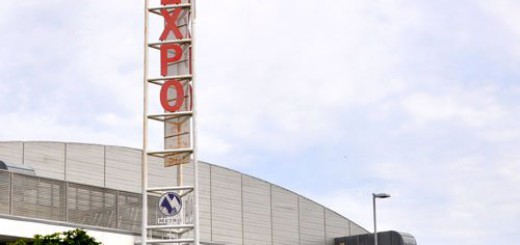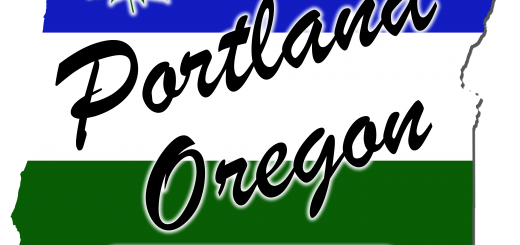On Wednesday, June 3rd, the Joint Committee on M91 held a public hearing on the draft of the dash 9 amendment to HB 3400. The language has grown from the 116-pages of the dash 8 amendment to 180-pages.
Co-Chair Burdick began the meeting by stating that the language in the dash 9 amendment that deals with the early start will be put into a separate bill and discussed independently, as well as the expectation that the energy provisions were going to have some substantial changes in a future revision.
Legislative Counsel Mark Mayer testified that the dash 9 draft was longer mostly due to conforming amendments and the name change to “enforcement specialists” requested by OLCC. He said that there were five primary changes that were either substantial or of primary interest to stakeholders:
- Page 18, line 9 is the first instance of the restored residency requirements for applicants only to two years.
- Page 19-20 includes changes to canopy limits that will ensure that outdoor and indoor are equivalent to the same harvest, and Page 20, line 22-23 caps the canopy size at 5000 square feet.
- Page 28 deals with employment relations due to conflicts with national labor regulations; Section 20-A states that state labor laws apply and Section 20-B, lines 30 through page 29 line 10 provide for whistle-blower protections.
- Page 33 Section 49 modifies the language regarding minors attempting to purchase or enter into establishments with proposed language found in HB 2213; page 35 is modeled more closely with the Liquor Control Act.
- Section 118, the energy plan is expected to be rewritten and will be done by Friday.
Senator Ferrioli questioned the underlying logic in equalizing indoor and outdoor harvests, and Rob Patridge, Chair of the OLCC, explained that it was intended to not advantage indoor growers over outdoor, or vice versa. Senator Ferrioli stated that starting out on equal footing made sense, but he wondered what provisions were in place to allow for market preferences, and he questioned if we intended to suppress one market in favor of another moving forward. Co-Chair Lininger said it was intended that businesses be small to start so no single licensee has a giant footprint, with tiered license opportunities that enable upgrades to larger sizes in future years. Representative Buckley suggested that it wasn’t a free market, but a closed market, and therefore we didn’t want to overwhelm the market since excess cannot be exported, although in the future, the limits could be raised. Co-Chair Burdick recommended a sunset provision on the equalizing language so that OLCC could then adjust by rules. She also suggested that OLCC could probably go lower than established caps, but not higher. Ferrioli said that the sunset might work, but that market forces should be accommodated in some way.
Patridge clarified that ad hoc group did not suggest the 5000 square foot canopy limit and Co-Chair Lininger said that she proposed it with the intent to get responses from community members and stakeholders. She said comments received simply walking from her office to the hearing suggested that 5000 might not be the right number.
Mazen Malik from the Legislative Revenue Office testified on three issues:
- The tax collection mechanism, suggesting the Department of Revenue was best suited to the collection of a point-of-sale tax.
- The tax rate, suggesting that while a single tax was “easy”, that the different items being taxed were “different animals” and tobacco taxes provide the framework for how to do that. He elaborated that there were flowers, with an existing black market, that should be taxed in one way, and there were “manufactured products” without a lot of position in the black market that could be taxed in a different way. He said these differences provided a good argument for different levels of taxation.
- Revenue impact statements, he said that the ability to provide any solid revenue estimates were a result of not having info in the bill on supply, demand, pricing and the quantity to be sold. He pointed to Milton Friedman’s work as illustrative on how variable these numbers could be depending on those factors.
Patridge testified that the OLCC had a long history of tax collection, auditing and control and tracking. He suggested OLCC could be more efficient through the tools provided by seed-to-sale tracking, as well as their presence working with licensees directly in the field. He said that the OLCC was the third largest revenue source for the state of Oregon, and that he believed that they were equipped to manage collecting the tax.
Ed Bergmans from Alternative Medical Consulting testified that medical growers should be invited in, because “opt-in” sounds “stuck”. He also requested special provisions for those with life-debilitating illness to have increased plant limits.
Margo Lucas from Alternative Relief Clinic, Cowgirl Cannabis and dispensary applicant shared her concerns with restrictions on Exclusive Farm Use requirements found in Section 34 (2) A. She said she grows indoors, outdoors and in a greenhouse on her farm and she opposes restrictions that would exclude her from farmers’ rights. She suggested that instead of excluding marijuana farmers from the gross revenue testing provisions for EFU’s, that instead the limit could potentially be higher for marijuana farmers. She concluded by saying she supported zoning for hemp and marijuana farms, as well as early sales.
Michael Hughes, attorney, author farmer and current hemp licensee, testified that it was important for the committee to contact federal representatives to demand action on issues including the 280E tax provisions and banking conflicts. He said other businesses couldn’t survive under the constraints put on marijuana businesses, and suggested that US Bank could be incentivized to allow licensees to open accounts in exchange for them getting the tax deposits for the industry’s tax collection. He explained that while there were still conflicts, that in 2014, there were 700 limited SAR’s filed by banks (indicating deposits potentially associated with marijuana businesses - required by federal law) so that the Department of Treasury and the Department of Justice could track money from this industry.
He also urged the committee to remember that there were a large number of people who lacked the money, lobbyists and influence of others, and to not forget about them when crafting these laws. He also identified the lack of consideration for greenhouses in language discussing licensing “indoor” and “outdoor” gardens. He said that Colorado’s experience demonstrated that 60% of sales were for edibles and secondary markets such as oils and extracts required a lot more marijuana to fulfill demand. He said plant limits, canopy limits and plant quotas all served to restrict production and were going to have supply issues that invited the black market back in. He concluded by saying that diversified operations that included indoor, outdoor and greenhouse gardens were normal farm strategies and that it shouldn’t require multiple different licenses to engage in these different growing methods.
Senator Ferrioli informed Hughes that there was an ad hoc banking committee list being posted to OLIS and that this committee would be proposing a joint memorial asking Congress for resolution on the banking issues, which he said were directly tied to rescheduling marijuana from Schedule 1 to Schedule 2. Ferrioli said that it was a “delicious paradox” that the Department of Revenue could accept payments from marijuana growers for taxes and mingle them with federal payments in the same bank account and that it wasn’t the definition of money laundering. He said that they will gladly accept your money for payment of taxes.
He also informed Lucas that it was the “worst form of hypocrisy” that you can grow alfalfa and have your home located on the farm, but if you grow marijuana, that you cannot under the same circumstances. He said for years, people have struggled with the gross income test, and that now that there is finally a crop that can meet that requirement, the goal posts are moved, and “I call foul”.
Adam Lininger testified that he was in high school and had worked on the Measure 91 campaign to help pass the bill partly because it provided vital funding to education. He said that he now wanted to have a voice in its implementation. He suggested three key pieces of advice for the committee:
- HB 3400 should include funding for education to prevent marijuana use among youth with a clear message that marijuana is not for students.
- OLCC should adopt a youth advisory council to share how marijuana affects youth in schools
- Adopt Representative Olson’s provision for those under 21 that would allow violators to have their charges expunged after any penalty or payment of fine was completed.
Donald Morse of the Oregon Cannabis Business Council thanked the committee for the work on edibles and testified that the -9 amendment reflects the ability of the industry to roll out edibles on time with the rest of the industry, and that the remainder of issues surrounding that roll out could be addressed in rules.
Anthony Johnson testified that there were a few points he wanted to note, including:
- Canopy limits should be “may” language, so that the OLCC can do fact finding and adjust the limits because 5000 square foot canopies may be too low.
- OLCC should collect the taxes for M91, because in a previous session, when M91 was HB 3371, the OLCC was most responsive and engaged in the process.
- The tax rate should be set as low as possible to compete with the underground markets; specifically that a 12.5% tax rate was consistent with what M91 proposed ($1.25 per gram) based on current dispensary prices of approximately $10 per gram, but lower is better and could be adjusted in the future.
- He echoed Huges and Lucas on their concerns for allowing dwellings on EFU land used for marijuana cultivation.
- He also echoed Lininger on expungement support found in the dash 2 amendment.
Representative Buckley remarked on the proposed canopy limits by explaining that indoor cultivation had remarkable energy usage and that factory-sized operations would have an impact on our state’s effort at carbon reduction and would have an impact on users by pushing rates up for an entire area to a new tier for all residents, concluding that while the industry had wants, communities and states have needs as well. Johnson responded that New Approach Oregon represented the text and what was best for the state in implementing that text, and that energy use should be considered but that limits could disrupt supply, and were most appropriately handled in rule making to allow for fact finding on energy concerns. Buckley responded that the 5,000 square foot limits were intended for discussion and could be adjusted in the 2016 Session, so it was a cap that could be changed and that the task force on energy would be doing fact finding. Johnson responded that the task force was good, but that the initial limits would be better situated at 10,000 square feet rather than the proposed 5,000 square feet.
Beau Whitney, CEO of Greenpoint Oregon and Economist, testified that he had adjusted his forecast and demand for marijuana in light of Monday’s testimony, suggesting that the annual recreational marijuana demand for 2015 would be about 115,000 pounds, significantly higher than previous testimony provided to the committee. He said that this estimate did not include the ten-to-one ratio of marijuana required to produce oils, and that this indicates that there is not as much excess out there as perceived. He said currently dispensaries were seeing supply constraints in products that there were trying to procure. He concluded by saying he was in favor of opening up medical marijuana dispensaries to recreational sales.
Geoff Sugarman invited Adam Lininger to “a seat at the table” with the ad hoc group working with OLCC, and suggested that he would be a “valuable voice”. He also testified that the Oregon Cannabis PAC was sending 40 members to Washington DC to meet with Congressional Members and the FDIC to work on the banking issues with Representative Blumenauer.
He explained that the payment of taxes under M91 should be able to be handled “close to home” and shouldn’t require traveling great distances across the state with thousands of dollars in cash. He recommended that the proposed opt-in language make it clear that patients are exempted from paying taxes, and that this should not be in the form of a tax refund with additional paperwork burdens. He also testified that the 5,000 square foot canopy proposed was too low, that we don’t know our current demand and that canopy size was far smaller than many existing outdoor medical grows. Senator Prozanski questioned the proposed equitable split between indoor and outdoor gardens, wondering why we were attempting to artificially control the markets instead of letting market forces decide? Sugarman responded that it was intended to find a fair way to set limits, but that market forces were fine as well. Buckley suggested that he was informed that a 5000 square foot canopy was approximately 96 plants, and questioned if Sugarman had the same understanding? Sugarman said that he did not have that same info and that many outdoor growers were currently operating on much larger parcels of land, while 98% of growsites were under 48 plants.
Jennifer Alexander testified that more focus should be placed on consumer needs, in addition to industry and state needs. She testified that while she had not had a medical marijuana card since the fees increased a few years previous, that she was still purchasing marijuana and would continue to purchase marijuana; that the market for marijuana exists and evolves with or without the legal mechanism to support it and recommended the July 1st early start date without taxes as the best mechanism to bring everyone into the market.
She also suggested that limits for adult cultivation should be defined in terms of “mature marijuana plants” like SB 964, but the current language defines it as simply “marijuana plants” and even includes “cut and drying” plants. She stated she supported the progressive license fees suggested by John Sajo in a previous hearing. She also recommended that the possession limits be increased from the current 8 ounces to a more realistic limit, possibly modeled on what is found in SB 964. She concluded that it was important to maintain the “grow your own philosophy” to enable consumers to keep market forces in balance.
Les Helgesun stated that he was a consultant that represents the interest of small medical growers. He said that it was not easy to grow quality medical marijuana, and he expressed frustration with the last posting of the draft dash 9 amendment, suggesting that color coding new changes to the text would be helpful. Co-Chair Burdick responded that the record would remain open for further responses, so that people could take time to go through the amendment and provide additional feedback. Helgesun testified that the majority of policy questions could be addressed by syncing up the language between the M91 roll out and SB 964, with the exception of the local opt-out. He also supported the “opt-in” for medical growers. He also stated that he had received some info from Seth Crawford on production estimates and that the market was currently flooded, but that since extract material largely comes from Southern Oregon, there are some shortages at this time of year for those products.
Patridge testified that the ad hoc committee would like to present a single consensus amendment so it is clear to the community what items were consensus products and what came from elsewhere; that instead of one huge amendment, the group would like to see amendments from each group that clearly identify what that group supports. Burdick said it was something that the committee would need to mull over. Patridge also extended an invitation to Adam Lininger to come to the OLCC meeting on the 25th and advise on the youth issues he identified.
Senator Prozanski questioned the language that refused to allow enforcement specialists to carry firearms but required them to make arrests. He suggested that this could pose public safety risks and if the enforcement specialists were simply investigating and issuing citations, that some of the proposed language needed to come out. Patridge said that the OLCC didn’t have the training or funding for firearms. Prozanski also questioned the 1000 foot limitation between two facilities which he did not see represented in the current language, and suggested that inspection authority of the OLCC should only extend to business activity surrounding the product, and not bookkeeping that may take place inside a home for a small business.
Senator Prozanski also expressed support for the opt-in language for medical growers, but said that there needed to be a clear method for how growers could opt-out if they wanted to return to medical production only.
Senator Ferrioli said that the ad hoc group should have been staffed by the committee and governed by the legislative process. He said that it was utterly unacceptable for adminstrators and bureaucrats to host legislative working groups, and that any proposal provided was “just another proposal”.
Pete Kramer from Mercy TV testified that there were three different products to consider for taxing purposes: flowers, edibles and oils. He also said that growing marijuana indoor, outdoor and in greenhouses was efficient. He concluded that we could keep the black market out by keeping our prices lower.
Co-Chair Burdick closed the meeting by announcing a hearing for Monday June 8 at 5pm, and also suggested that there might be additional meetings or changes in schedule to allow for earlier meetings, so to watch for those changes.
You can watch the full hearing online or download pdf’s to read the submitted testimony.






